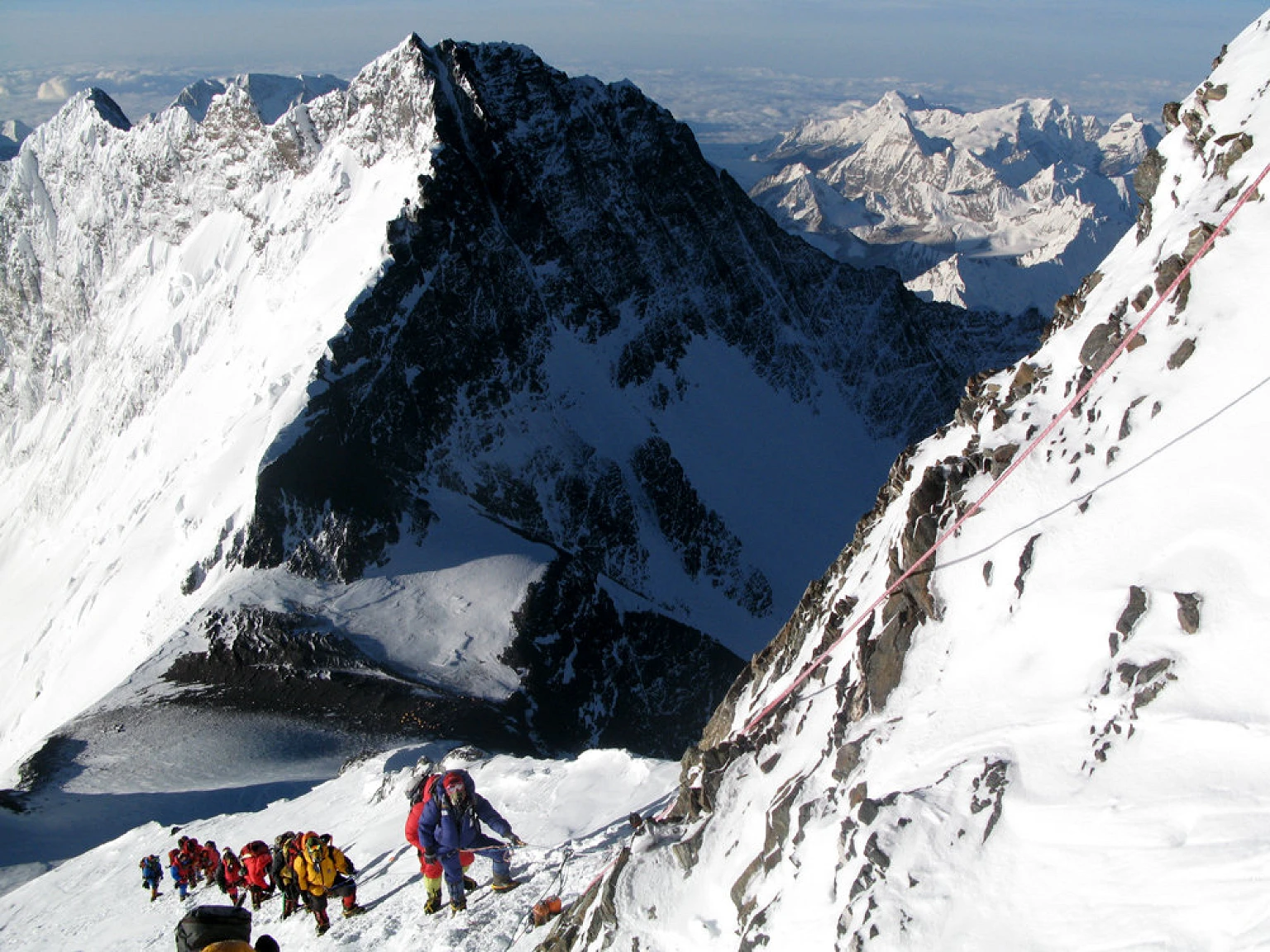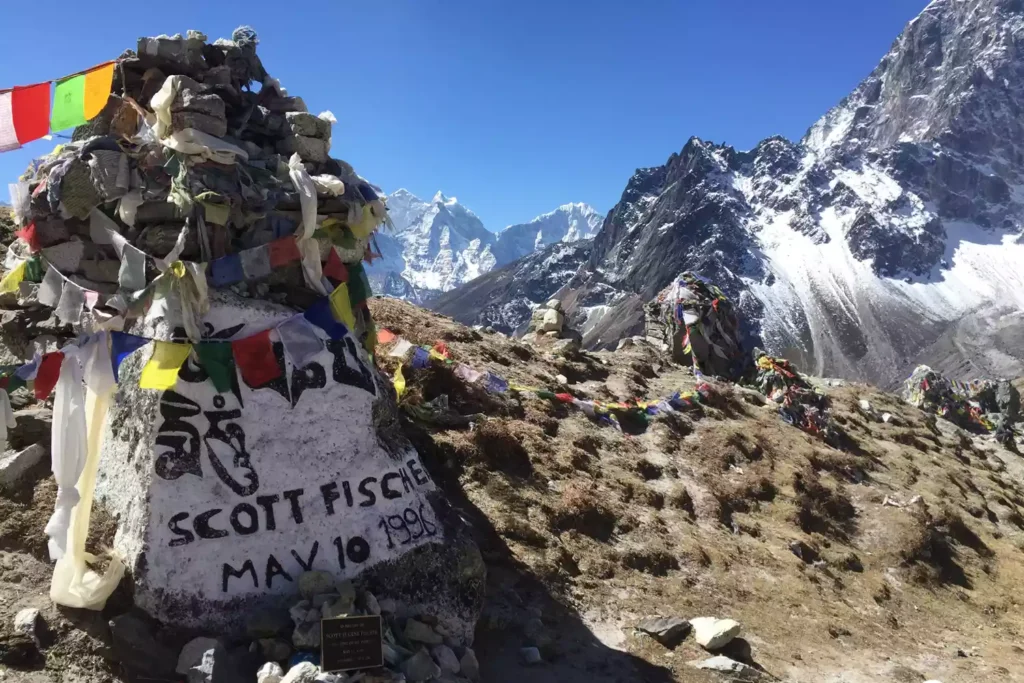What Really Happened on Everest in 1996? The Untold Story
It was supposed to be a victorious day on the roof of the world. On May 10, 1996, dozens of climbers lined up for their chance to stand on the summit of Mount Everest, chasing a dream that few ever reach. But by the next morning, eight of them would be dead – claimed by the mountain in one of the deadliest days Everest has ever seen.
What really happened on Everest that year? And what can we still learn from it today?

Everest – below the South Summit. Lhotse in background, South Col below.© Topper Harley, May 2008
Table of contents
Two Teams, One Goal
The Unbelievable Return
What Went Wrong?
What Changed After 1996?
Two Teams, One Goal
That season, two major guided expeditions were aiming for the summit:
- Rob Hall’s Adventure Consultants
- Scott Fischer’s Mountain Madness
Both were professional guides. Both were leading paying clients. Both were determined to reach the top.
Among the climbers were:
- Jon Krakauer, journalist for Outside magazine
- Beck Weathers, a Texan doctor with vision problems at altitude
- Yasuko Namba, a Japanese woman completing the Seven Summits
- Doug Hansen, a postal worker making his second Everest attempt
There were also other independent teams and climbers on the same route that day, including Taiwanese and South African expeditions.
What no one expected was that Everest was about to teach a brutal lesson. The story of May 10, 1996, is not just about a storm. It’s about decisions made in thin air, moments where everything hinged on a single choice, and the brutal way the mountain tests human limits.
A Promising Start
The teams set out from Camp IV on the South Col shortly after midnight. Their plan was simple: climb through the night, reach the summit by early afternoon, and return safely before weather could turn.
But problems appeared almost immediately.
Above the Balcony, climbers found the fixed ropes missing. They waited precious hours while guides secured the route in the freezing dark. This delay caused traffic jams, especially at Hillary Step, the narrow, vertical rock face just below the summit, where climbers had to queue for their turn.
Time was slipping away, but many pushed on.
By 2:00 PM, the pre-agreed turnaround time had passed. Still, some climbers were high on the mountain, determined to reach the top. Among them was Doug Hansen, a postal worker from Seattle attempting Everest for the second time, and his guide, Rob Hall. Hall knew they were dangerously late, but he stayed with Doug, encouraging him, refusing to abandon his client.
By the time they reached the summit, it was nearly 4:00 PM. They should have been on their way down hours earlier.
Elsewhere on the mountain, Scott Fischer was also behind schedule. His Sherpa, Lopsang Jangbu, had physically pulled him up part of the climb – a sign Fischer was already dangerously exhausted.
The Mountain Strikes Back
As the climbers began descending, a sudden storm exploded over Everest. Winds roared. Snow swallowed the path. Visibility collapsed.
Radio calls filled the static: people lost, climbers running out of oxygen, teams scattered in the whiteout.
Rob Hall and Doug Hansen were stranded high above. Hall’s repeated radio calls confirmed he was staying with Doug, who could no longer move. Soon, the radios went quiet.
But Hall wasn’t entirely alone. He still had contact with base camp. And, in one of the most heartbreaking moments in mountaineering history, he made a final satellite phone call to his pregnant wife, Jan Arnold, in New Zealand. His voice was fading. The storm was screaming around him.
“Sleep well, my sweetheart. Please don’t worry too much.”
Hall’s body remains on the mountain to this day.
Meanwhile, Scott Fischer collapsed higher up the slope, likely overwhelmed by exhaustion, altitude sickness, and possibly cerebral edema. His guide, Anatoli Boukreev, had already descended ahead without supplemental oxygen – a decision that would later spark intense debate.

A Night of Chaos
Lower down, groups of climbers became disoriented in the storm, some collapsing where they stood. Beck Weathers, a Texan doctor, had earlier gone temporarily blind from high-altitude eye complications and was left behind, sitting in the snow as others struggled past him.
Many believed he wouldn’t make it through the night.
Beside him, Yasuko Namba, who had just completed her dream of climbing the Seven Summits, also collapsed. Despite efforts to revive her, she would not survive.
Guides and Sherpas fought to rescue whoever they could. Boukreev made several solo rescue attempts in the blizzard, dragging exhausted climbers back to the tents at Camp IV in what would later be recognized as acts of extraordinary bravery.
But it was impossible to save everyone.
The Unbelievable Return
By morning, the storm had eased, but the mountain had already taken its toll.
Incredibly, Beck Weathers was still alive. His face was blackened, his hands and nose were frozen, but somehow, through sheer will, he stood up and staggered alone toward camp.
His survival after spending nearly 18 hours exposed in the death zone is still considered one of the most extraordinary comebacks in mountaineering.
Weathers would later lose his nose, hands, and parts of his limbs to frostbite, but he walked away from Everest with his life.
Scott Fischer’s body was later found and remains on the mountain. Doug Hansen’s body was never recovered.
What Went Wrong?
In the aftermath, the climbing world asked:
How could this have happened?
Several small mistakes added up to disaster:
- The fixed ropes were not properly prepared in advance.
- Bottlenecks and overcrowding slowed climbers.
- The critical turnaround time was ignored.
- Oxygen was mismanaged; some climbers ran out too soon.
- Weather forecasts missed the severity of the approaching storm.
Some also questioned whether commercial guiding had gone too far. Were climbers being taken too high, too fast, without enough experience?
Was there too much pressure to deliver clients to the summit at all costs?
The story exploded worldwide when Jon Krakauer, who survived the climb, published Into Thin Air, his raw, controversial account of what happened. Anatoli Boukreev responded with his own version in The Climb, defending his decisions and offering a different view.
Even today, debates continue.
What Changed After 1996?
The disaster forced some important changes:
- Weather forecasting became faster and more accurate.
- Logistics for oxygen and fixed ropes improved.
- The 2:00 PM turnaround time became a strict rule in most expeditions.
But even today, Everest’s biggest problem – crowding – remains unsolved.
Every year, long queues form near the summit. Every season, climbers are still tempted to push too far, too late.
The Story That Never Leaves Us
The 1996 Everest disaster is not just a story of tragedy. It’s about human loyalty, leadership, survival, and the deadly risks that come when ambition outpaces safety.
It’s a story that changed how we climb, but one that still haunts the mountain.
Because on Everest, even when you think you’ve planned for everything – the mountain always has the final word.
